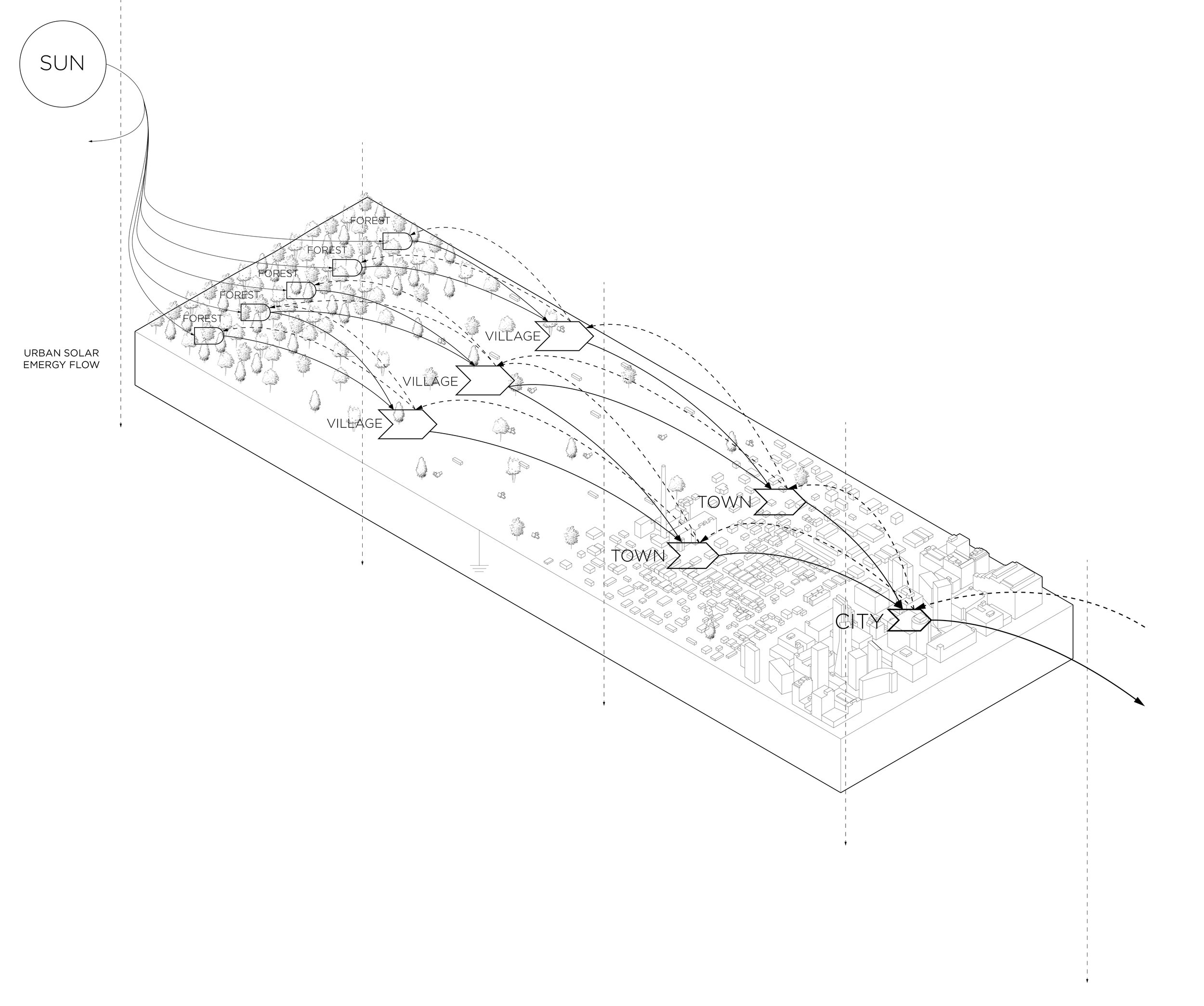Nature tends to follows certain laws of energy and hierarchy, mainly:
1. Energy quantity (i.e. energy cannot be created nor destroyed, also known as the Conservation Law).
2. Energy quality (i.e. although conserved, energy degrades over time, also known as the Entropy Law).
MATERIAL AND ENERGY CYCLES
The organization of systems depends on material and energy flows. Materials are coupled with the transformation of energy (e.g. solar energy + carbon + water + soil nutrients = tree).
EMERGY FLOW
Although different forms of energy do different qualities of work, all energy can be converted to a single unit that expresses all the direct and indirect processed needed to make that specific form of energy. Since almost all energy on earth comes from the sun, a common unit of measure can be used to trace that energy back to its original source, known as emergy. Spelled with an “m” to indicate the energy’s “memory,” it us expressed in solar emjoules (sej), therefore, defining all energy flows in an energy system.
FEEDBACK REINFORCEMENT
Downstream elements feed back high-quality materials and services to upstream elements reinforcing the processes that contribute.
PULSING
All systems tend to move away from steady state over time. They grow to a maximum high-diversity state but then are followed by a process of removal and regrowth.
ARCHITECTURE AS CONCENTRATED ENERGY
The second law of energy states that structures of higher concentration than their environment tend to disperse and depreciate over time. Concentrating structures, therefore, requires available energy to do concentrating work.
As available energy works to concentrate material, much of the energy becomes degraded (to heat, material recycling, etc. losing its ability to do further high quality work) while emergy still increases. The mass/emergy ratio of the concentrated material increases along the energy hierarchy, implying the energy role of materials in the building process.
Self-organizing systems tend to spatially converge materials towards centers. The greater the convergence, the more emergy is required per unit weight and the less material can be used, making higher concentration areas more scarce, but of higher quality.





